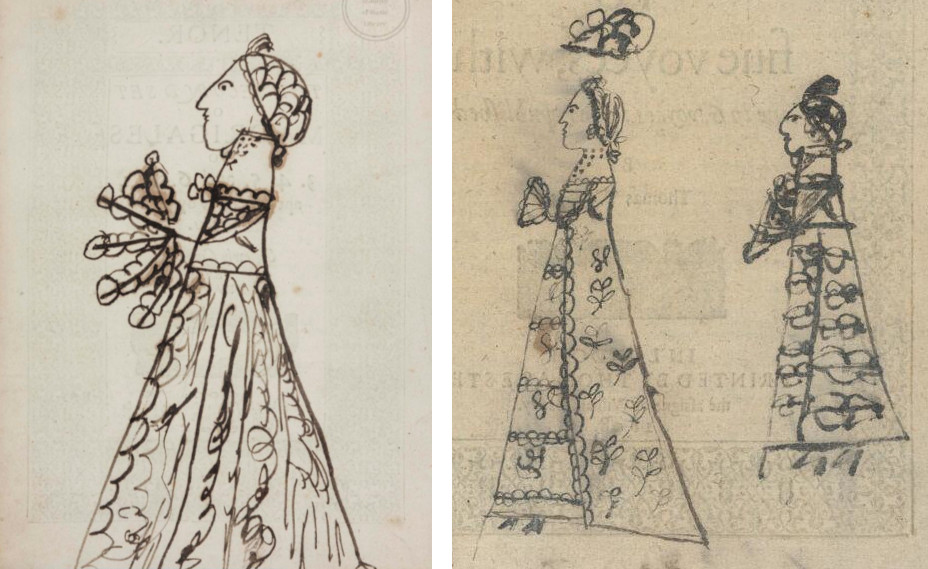
This is charming: Looking for a place to practice her drawing one day, an anonymous child in the 1700s chose the blank spaces in a music book. In doing so, she made herself immortal, as the music is now held in university collections.
The figure at left is scrawled in John Wilbye’s Second Set of Madrigales, now at the Royal Academy of Music; the one on the right is in Thomas Weelkes’ Balletts and Madrigals at Harvard. Drawings and handwriting exercises apparently by the same child appear in music books at UCLA, Huntington Library, and the University of Illinois. (The drawings all appear in tenor books, which suggests that these copies had been bound in one volume when the girl drew the pictures.)
The child’s identity is unknown, although the name Eliza Richardson accompanies one practice alphabet. She seems to be drawing the same woman consistently, recognizable by her prominent nose, strong chin, and thick neck. It’s not clear when the drawings were made, but the woman appears to be wearing a sack-back gown, a style that was most popular between 1720 and 1770. According to Durham University music professor David Greer, “The dense patterns, small cap, and closely dressed hairstyle suggest the early part of this period.” But I believe that’s all we know.
(David Greer, Manuscript Inscriptions in Early English Printed Music, 2015.)
